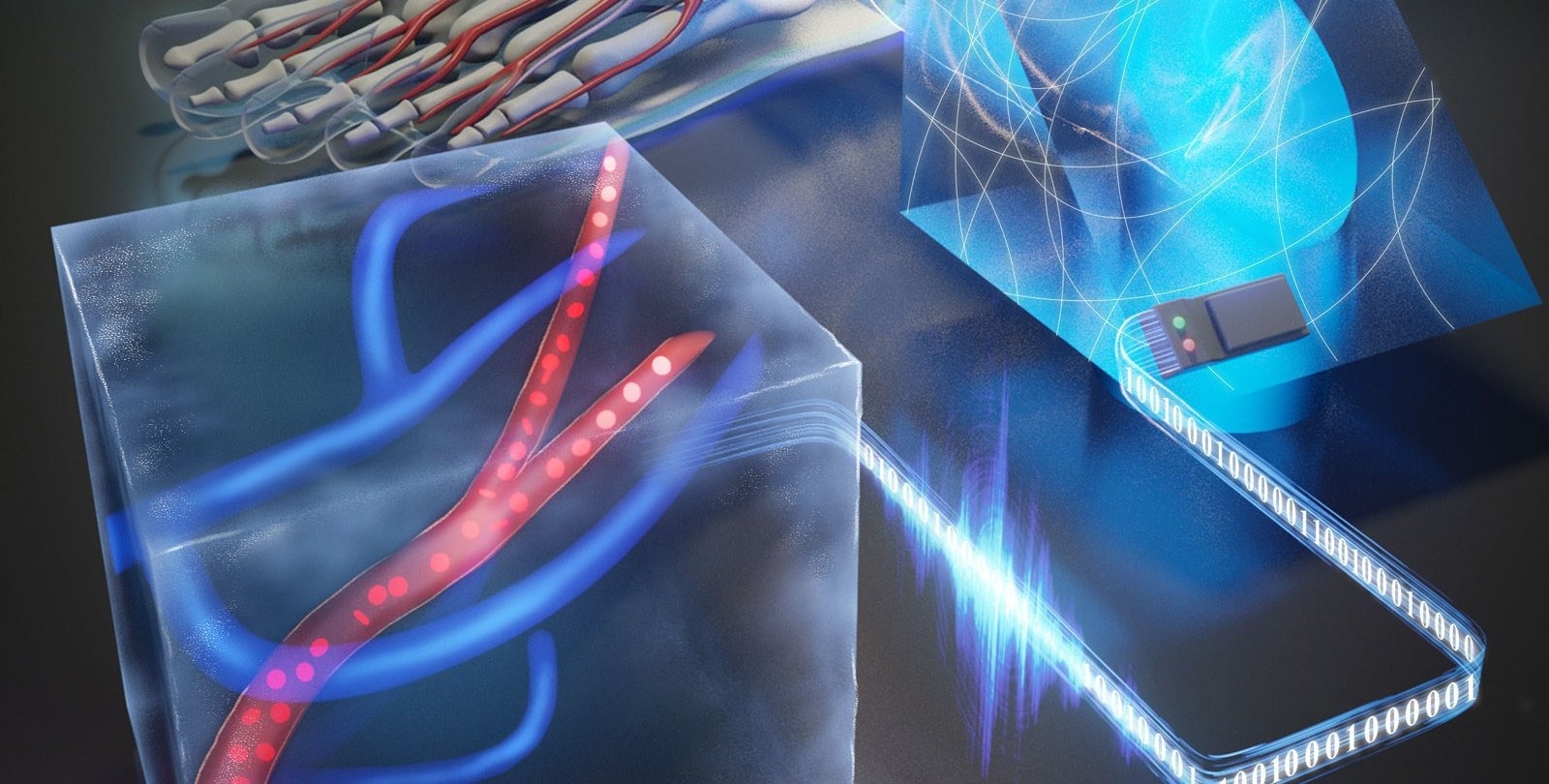New research from Caltech’s Lihong Wang, the Bren Professor of Medical Engineering and Electrical Engineering, hopes to redefine and enhance an existing imaging technology introduced by the team in 2020. The research was published in the journal Nature Biomedical Engineering.

Image Credit: California Institute of Technology
The technique, known as PATER (Photoacoustic Topography Through an Ergodic Relay), belongs to the realm of photoacoustic imaging technology, a specialty of Wang’s research group.
In this imaging method, laser light pulses into tissue, causing its molecules to vibrate, and these vibrations are used to create internal structure images, akin to ultrasound imaging.
Photoacoustic imaging, however, poses technological challenges due to its production of imaging information in a brief burst. Early iterations of Wang’s technology required arrays of hundreds of sensors pressed against the imaged tissue, making it complex and expensive.
Wang and Zhang achieved a reduction in the necessary transducers by employing an ergodic relay device. This specialized tool operates by decelerating the flow of information, conveyed as vibrations, into a transducer. This approach was previously detailed in a story about PATER.
In computing, data transmission primarily occurs in two ways: serial and parallel. Serial transmission involves sending data as a single stream through a solitary communication channel. On the other hand, parallel transmission involves sending multiple pieces of data simultaneously through several communication channels.
A simple analogy to comprehend these types of communication is by likening them to cash registers in a store. Serial communication resembles having a single cash register where everyone queues in the same line and interacts with the same cashier. In contrast, parallel communication is akin to having multiple registers, each with its line for customers.
Wang's system, comprising 512 sensors, mirrors a store equipped with numerous cash registers. All these sensors function simultaneously, each gathering specific data concerning the ultrasonic vibrations produced by the laser pulse.
Given the brief duration of the ultrasonic vibrations, utilizing a lone sensor to collect all the data would overwhelm it. Here, the ergodic relay plays a crucial role.
According to Wang, an ergodic relay functions as a chamber allowing sound to echo. When the ultrasonic vibrations traverse this relay, they undergo a temporal expansion.
In the context of the cash-register analogy, envision it as an additional employee aiding the lone cashier. This employee directs customers to stroll a few rounds around the store until the cashier is prepared to attend to them, preventing the cashier from being overwhelmed.
The latest iteration of this technology, named PACTER (Photoacoustic Computed Tomography Through an Ergodic Relay), takes a step further. It enables the system to operate with a single transducer, utilizing software to collect data equivalent to that of 6,400 transducers.
Wang, also holding the Andrew and Peggy Cherng Medical Engineering Leadership Chair and serving as the executive officer for medical engineering, highlights two enhancements of PACTER over PATER.
Firstly, PACTER surpasses PATER by generating three-dimensional images, a capability absent in PATER's capacity to produce solely 2D images. This advancement became feasible due to the refinement of software within the system.
Transitioning to 3D imaging significantly escalates the data requirement. The challenge was funneling the immensely increased data through a single transducer.
Yide Zhang, Postdoctoral Scholar, California Institute of Technology
Zhang added, “Our solution emerged by altering our approach. Rather than a direct and computationally intensive method of reconstructing 3-D images from the single-transducer data, we first expanded one transducer into thousands of virtual ones. This idea simplified the process of 3D image reconstruction, aligning it more closely with the traditional methods in our photoacoustic imaging."
Secondly, in contrast to PATER, PACTER eliminates the need for calibration before each use.
With PATER, we had to calibrate it each time to use it and that's just not practical. We got rid of this per-use single-time calibration.
Yide Zhang, Postdoctoral Scholar, California Institute of Technology
Calibration was necessary due to the system firing a laser light pulse into the tissue, causing an “echo” to bounce back into the transducer, hindering the direct sensing of ultrasound information.
Wang explains that PACTER overcomes this challenge by incorporating a component known as a delay line into the system. The delay line compels the echo to follow a longer physical path on its return to the transducer, ensuring that it arrives after the direct ultrasound information has been received.
Even though I always said this was possible, I knew it would be challenging.
Yide Zhang, Postdoctoral Scholar, California Institute of Technology
The co-authors of the study are Peng Hu (Ph.D. '23), a Former Graduate Student in Medical Engineering; Lei Li (Ph.D. '19), a Former Postdoc in Medical Engineering; Rui Cao, a Postdoc in Medical Engineering; Anjul Khadria, a Former Postdoc in Medical Engineering; Konstantin Maslov, a Former Staff Scientist at Caltech; Xin Tong, Graduate Student in Medical Engineering; and Yushun Zeng, Laiming Jiang, and Qifa Zhou of USC.
The study was financially supported by the National Institutes of Health.
Photoacoustic Computed Tomography through an Ergodic Relay (PACTER)
Photoacoustic Computed Tomography through an Ergodic Relay (PACTER). Video Credit: California Institute of Technology.
Journal Reference:
Zhang, Y., et al. (2023). Ultrafast longitudinal imaging of haemodynamics via single-shot volumetric photoacoustic tomography with a single-element detector. Nature Biomedical Engineering. doi.org/10.1038/s41551-023-01149-4.